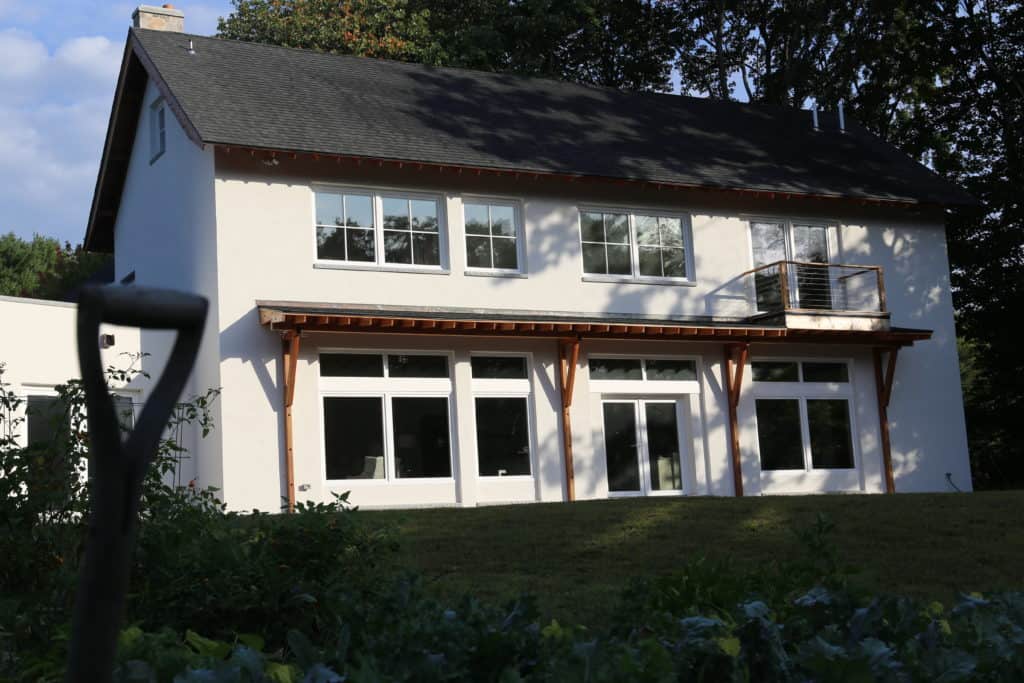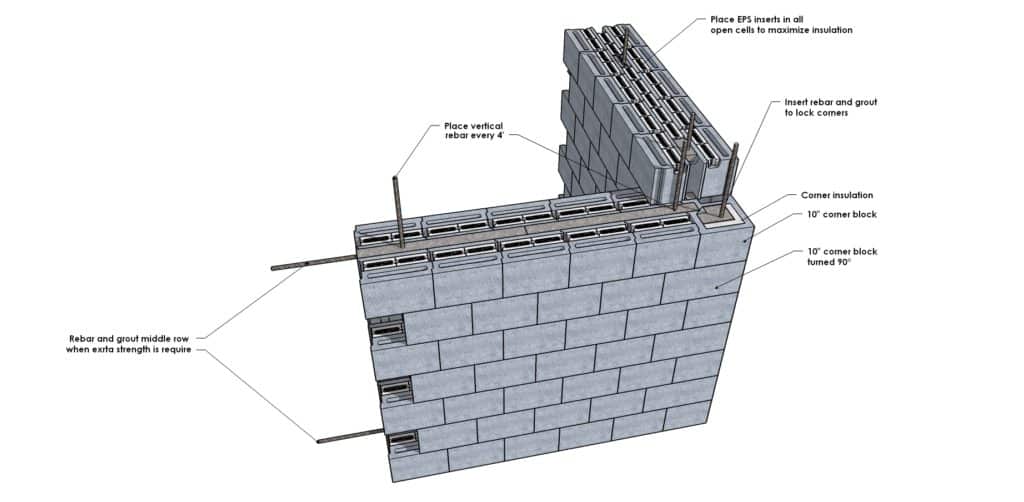The 90-year-old Maine-based concrete company invents building product for homeowners and high-performance sector.
Sanford, ME – Founded in 1927, Genest Concrete, a fourth-generation concrete block producer, distributor, and retailer, unveils Comfort Block — a fully insulated, self-contained concrete building block wall system. This is the first product of its kind in the U.S. being released into the residential and small-scale construction market. Inspired by German engineered masonry products, the 16-inch-thick wall system replaces the need for wood and drywall during construction and offers a cost-neutral, chemical-free alternative to building net-zero, passive structures. Other benefits include:
- Comfort Block exceeds energy-efficiency standards.
- Is resilient to fire and natural disaster.
- Result in decreased energy and insurance costs.
- Is mold, pest, and chemical free.
Chris Genest, general manager of Genest Concrete, developed the Comfort Block product with two goals — put the masons back to work and create a masonry product that offers entry into the green build movement that is sweeping the world.
“Masonry is a beautiful craft, but a dying industry,” says Genest. “We need to put the masons to work and make it easy for young apprentices to get started — but we also need to follow the market as it evolves.”
An international study shows that green building projects are expected to double in the United States by 2018. Comfort Block follows passive house standards and resilient building models by exceeding energy-efficiency and durability standards.
The wall system is precisely calibrated, needing only thinset or concrete glue, not mortar, to secure the blocks in place. This process limits the mess and water needed at the jobsite while increasing the speed of construction. Once set, the blocks are covered by plaster on the inside and stucco on the outside. Since all products used in the construction process are nonorganic, there is no opportunity for mold or termite penetration — creating a healthy chemical- and toxin-free environment that is particularly important for people suffering from allergies or chemical sensitivities.
Currently, there are four homes in various stages of construction. Each has been designed by traditional architects, built by masons or general contractors, and wired and plumbed by traditionally trained and licensed subcontractors. Chris Genest built his own home using the Comfort Block wall system. His energy bills have decreased by 90%, and his homeowner’s insurance cost has decreased because of the structure’s ability to resist fire, flood, wind, and pest damage, unlike traditional stick-built homes.
“Comfort Block is going to be a catalyst growth, and it marks a turning point for small-scale commercial and residential construction,” says Genest. “For a little company that started transporting sand and gravel by horse and buggy in the 1920s, we are pretty proud of the mark we believe this product will leave on the industry.”
Comfort Block compared to wood
Comfort Block is a low-maintenance material that does not burn, mold, or invite pests. The walls are significantly stronger to resist extreme weather events such as floods, hurricanes, and tornados. Wood construction is prone to rot and fire, and considerable effort must be made to insure that it lasts a lifetime. Building with Comfort Block is cost-neutral to stick-building after the first year, when energy and insurance savings are realized. Comfort Block homes exceed minimum construction standards energy efficiency.
Comfort Block compared to insulated concrete forms (ICFs)
Comfort Block is the inverse of ICF construction, as the insulation is on the inside versus the outside. ICF requires sheetrock on the inside and siding on the outside to protect the insulation, making it prone to moisture damage.
Comfort Block compared to concrete modular units (CMUs)
Comfort Block has self-contained insulation, while CMUs require an additional step for that to be added, making construction quicker and cheaper. The blocks are precisely calibrated and can be stacked and glued quickly. Comfort Block uses no mortar, so there is less water on the jobsite needed, and construction is expedited.














